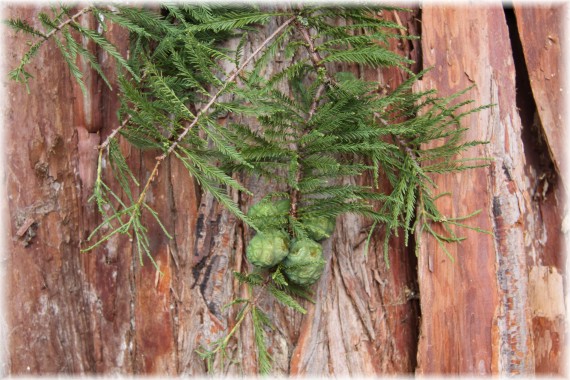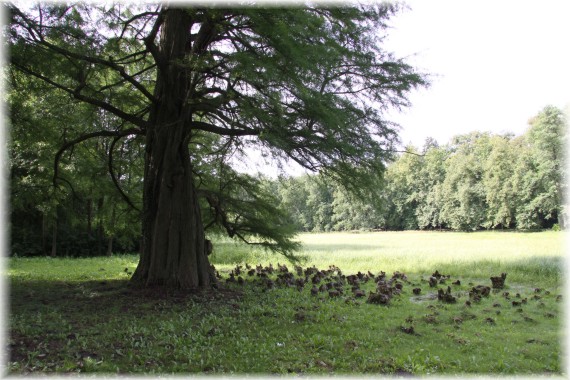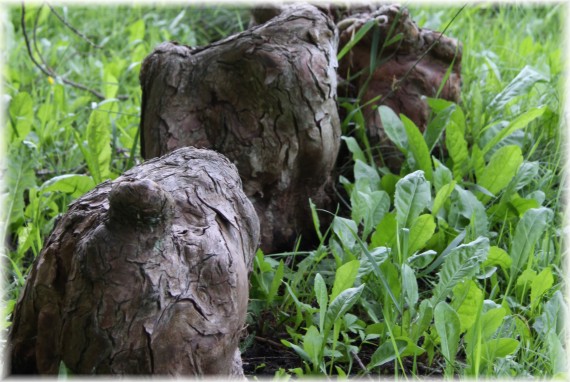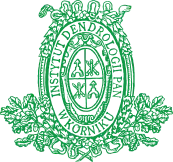- Details
- Written by: Wiesław Płócieniak
- Category: Trees of the World
- Hits: 658

Tourist - educational path "TREES OF THE WORLD"
The Kórnik Arboretum boasts a rich collection of woody plants from different parts of the world. The tourist-educational path "TREES OF THE WORLD" presents 25 selected tree species found in the wild in North America, Asia and Europe. They illustrate the diversity of trees in terms of crown habit, leaf structure, flowers and fruits. Also presented are the relationship of man with trees, their importance in tradition and culture, as well as their utilitarian and medicinal values.
The "TREES OF THE WORLD" path was created in 2010 as part of a project co-financed by the European Union, with support from the Municipality of Kórnik and the Kórnik Plant Foundation.
The length of the path: 3.5 km
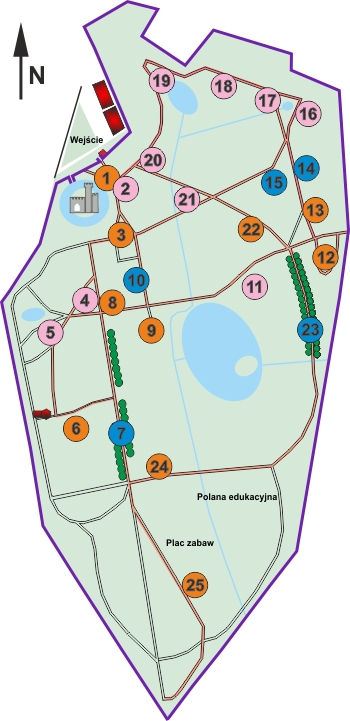
 Trees from Asia:
Trees from Asia:
Tree of Heaven (Ailanthus altissima) - 2
Dove Tree (Davidia involucrata) - 17
Eucommia (Eucommia ulmoides) - 21
Katsura Tree (Cercidiphyllum japonicum) - 18
Japanese Horse Chestnut (Aesculus turbinata) - 20
Kobushi Magnolia (Magnolia kobus) - 4
Dawn Redwood (Metasequoia glyptostroboides) - 16
Maidenhair Tree (Ginkgo biloba) - 5
Caucasian Wingnut (Pterocarya fraxinifolia) - 11
Wilson's Poplar (Populus wilsonii) - 19
 Trees from Europe:
Trees from Europe:
European Beech (Fagus sylvatica) - 14
Common Yew (Taxus baccata) - 10
Small-leaved Lime (Tilia cordata) - 23
Large-lived Lime (Tilia platyphyllos) - 77
White Poplar (Populus alba) - 15
 Trees from North America:
Trees from North America:
Bald Cypress (Taxodium distichum) - 9
Northern Red Oak (Quercus rubra) - 24
White Fir (Abies concolor) - 8
Eastern Black Walnut (Juglans nigra) - 13
Black Locust (Robinia pseudoacacia) - 25
Eastern White Pine (Pinus strobus) - 3
Western Yellow Pine (Pinus ponderosa) - 6
American Tulip Tree (Liriodendron tulipifera) - 22

- Details
- Written by: Wiesław Płócieniak
- Category: Trees of the World
- Hits: 550
Trees of the World
| English name: | TREE OF HEAVEN |  |
| Polish name: | BOŻODRZEW GRUCZOŁKOWATY | |
| Latin name: | Ailanthus altissima (Mill.) Swingle | |
| Natural habitat: | north-eastern China | |
| Height: | 20-30 m | |
| Characteristics: | It is a fast growing tree, often developing root offshoots. The bark is smooth, light gray, with longitudinal bright stripes. The twigs are thick, brown-yellow, lightly pubescent. Leaves grow as long as 60 cm, even up to one meter on coppice shoots! The leaves consist of 11-25 leaflets, which have a few blunt teeth at the base, each with a gland. After being rubbed, the glands emit an unpleasant odor. The leaves develop late during spring, in May, at first they are reddish, but remain green until very late autumn and fall after the first frost. Inflorescens are green-white, up to 20 cm long, they appear in June and July. The Tree of Heaven is dioecious, which means there are male and female individuals. The fruit is a nut surrounded by an elongated wing, which turns red as it ripens. The Tree of Heaven is highly resistant to air pollution, drought and soil salinity. | |
| Additional information: | The species has been planted since 1751 in the entire Europe. Fresh bark is a strong bactericidal and bacteriostatic agent. In China, it is used to treat diarrhea and as an emetic. | |
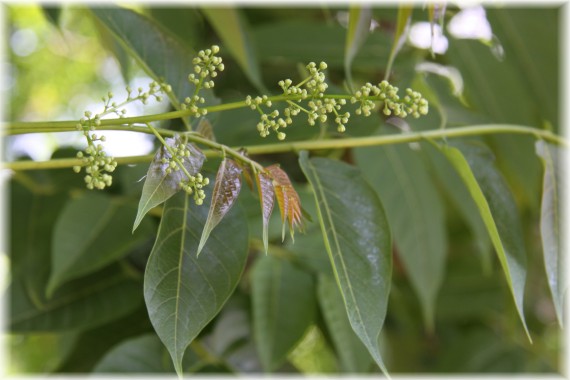
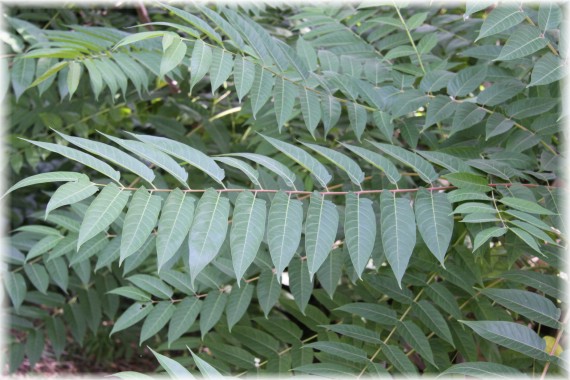
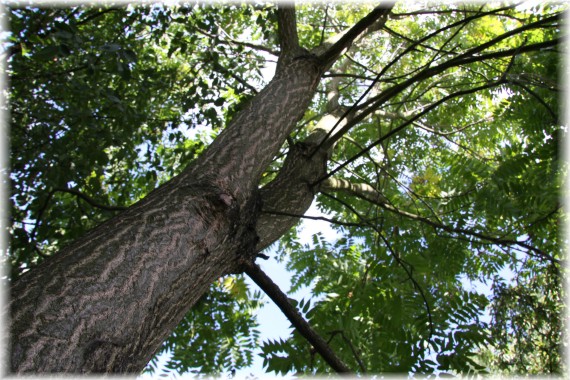
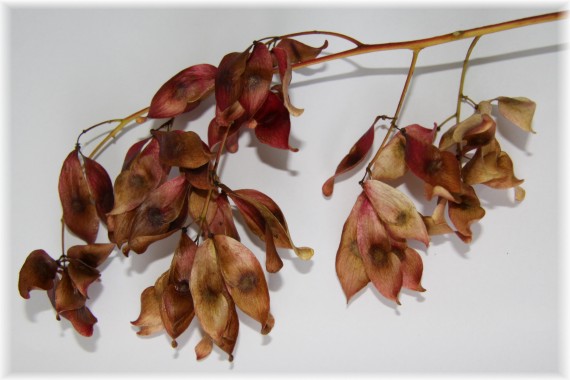
- Details
- Written by: Wiesław Płócieniak
- Category: Trees of the World
- Hits: 402
Trees of the World
| English name: | EUROPEAN BEECH |  |
| Polish name: | BUK POSPOLITY | |
| Latin name: | Fagus sylvatica L. | |
| Natural habitat: |
Western, Central and Southern Europe |
|
| Heigth: |
up to 30, sometimes even up to 50 m |
|
| Characteristics: | It is one of the most beautiful of our forest trees. In southern and western parts of Poland it forms pure beech forests, sometimes it grows as a minor component in other forests. Bark on the trunk is thin, smooth and ash-gray. In autumn, the leaves beautifully turn yellow and brown-yellow. In young trees, the leaves often remain dead on the tree until spring. It blooms at the same time when leaves develop, at the beginning of May. Fruits are triangular nuts. They are favourite food of birds and rodents. The beech is often found in parks, also the purple-leaf variety. Its hanging and column forms are very unique. The beech likes shade and may be used to form hedgelines and hedgerows. | |
| Additional information: | European Beech wood is heavy, hard and fissile. It is used in furniture-making, turnery, in making parquets and musical instruments (e.g. the Italian name for bassoon – comes from faggio, meaning beech). Beech nuts are rich in fat, which was used to make a curative oil, which was also used as a combustible and technological oil. It contains phagine, an alkaloid which is toxic and hallucinogenic in large doses. | |
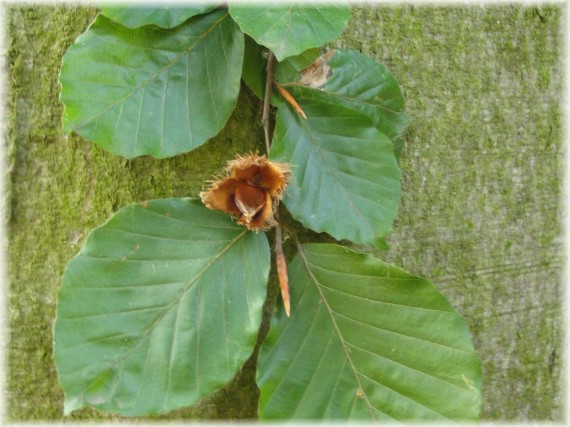
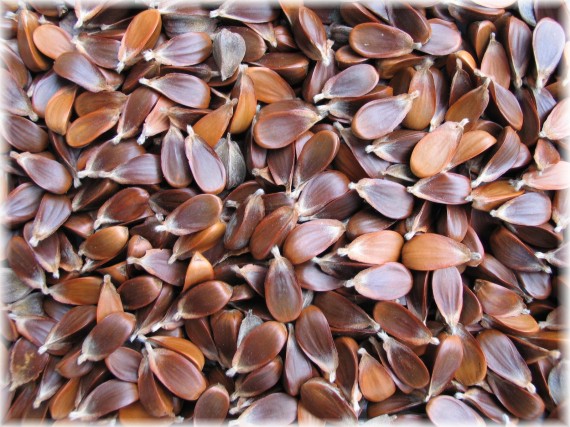
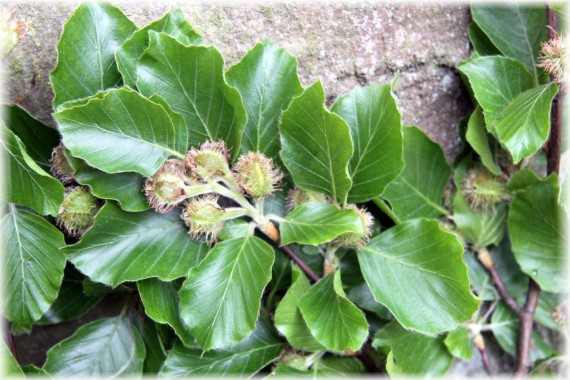

- Details
- Written by: Wiesław Płócieniak
- Category: Trees of the World
- Hits: 559
Trees of the World
| English name: | COMMON YEW |  |
| Polish name: | CIS POSPOLITY | |
| Latin name: | Taxus baccata L. | |
| Natural habitat: | Central and Western Europe, North Africa, Asia Minor, Northern Iran and the Caucasus Mountains; in Poland it reaches the western border of its range | |
| Height: | up to 20 m | |
| Characteristics: | It is a tree or a broad bush. The trunk is covered by a red-brown flaking bark. Needles 2-3 cm long are dark green, shiny, lighter on the underside. It is a dioecious plant. Flowers develop in April and are wind-pollinated. Seeds are dark brown, egg shaped, surrounded by a soft, bright red cover, they ripen in September and October. Most parts, except for the bright red aril, are poisonous, they contain taxine which disrupts heartbeat. It is highly tolerant to trimming, and it is often used to make hedges and trimmed sculptures. Yew is also highly tolerant to shade. | |
| Additional information: | Yew wood does not contain any resin, it is hard, heavy, flexible and has a beautiful red tint. Yew wood was used to make bows, crossbows and arrows. During the antiquity, it was considered a tree of death, and the Gauls used its sap to poison arrows. Folk superstitions claimed that even lingering in the yew's shadow was harmful. It is the first species to be subject to total protection in Poland (Władysław Jagiełło, Warenian Articles, years 1420 and 1423). | |
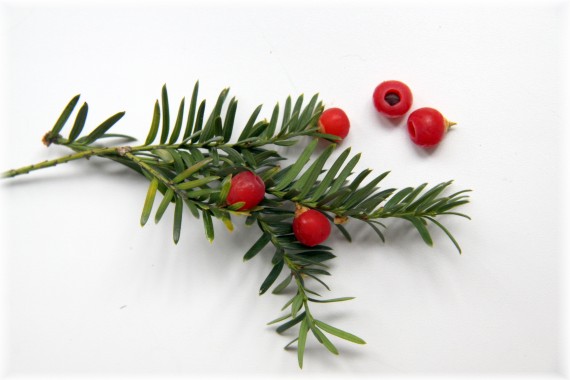
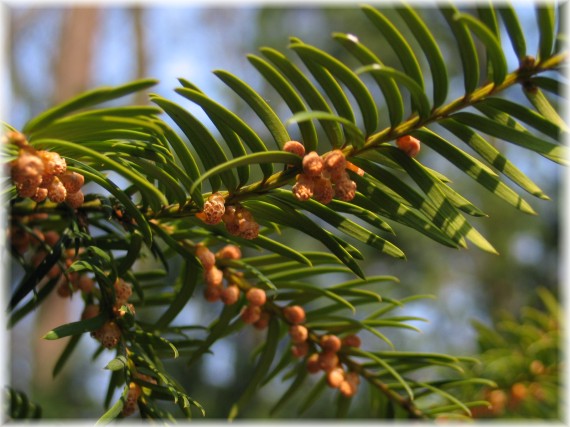
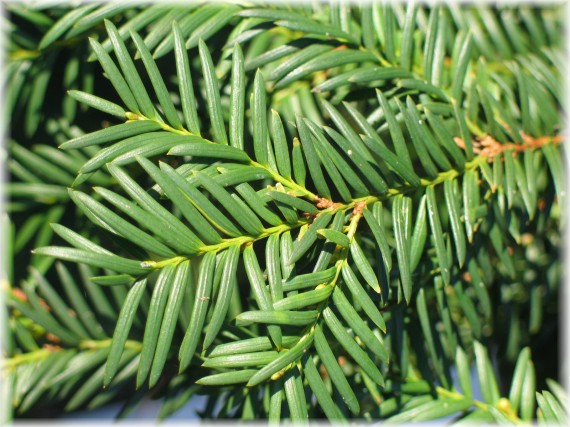
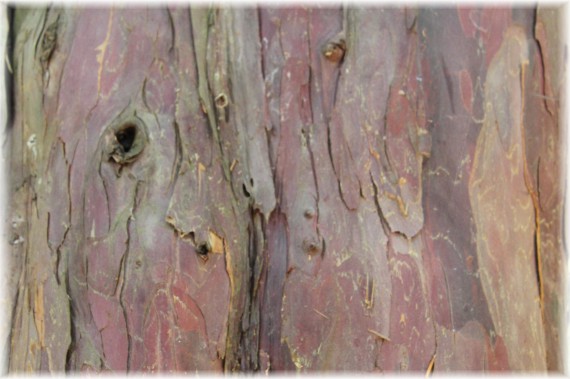
- Details
- Written by: Wiesław Płócieniak
- Category: Trees of the World
- Hits: 515
Trees of the World
| English name: | BALD CYPRESS |  |
| Polish name: | CYPRYŚNIK BŁOTNY | |
| Latin name: | Taxodium distichum (L.) Rich. | |
| Natural habitat: |
south-eastern regions of the United States |
|
| Height: | in its natural habitat: up to 50 m, in Poland only up to 25 m | |
| Characteristics: | In its natural habitat, the tree usually grows on marshes and flood plains. The cypresses' crown is regular with dense branches, and its trunk is covered with thin, fibrous, brown-red bark. Its shoots are divided into long and short sprouts. Needles are soft, light green, about 5-17 mm long, alternately arranged. In autumn, they turn rusty-brown and fall off along with branchlets. Inconspicious flowers appear in March and April. Small spherical cones are sticky because of red, aromatic resin, they ripen in autumn. | |
| Additional information: |
Cypresses growing on swamps or surrounded by water develop pneumatophores, specialized aerial "breathing roots". These are trunk-like formations growing upwards from roots directly under earth's surface. Their function is to aerate the root system and anchor the large tree in marshy ground. Native Americans used to make beehives out of the pneumatophores. Kórnik Arboretum is home to the oldest and largest Bald Cypress in Poland. |
|
